Loud vehicles and noise often penetrate indoors. Can soundproof curtains effectively block these disruptive sounds?
Quality thick soundproof curtains can substantially reduce exterior and ambient noises entering through windows, decreasing noise pollution by up to 90%.
Let’s examine how soundproof curtains work, factors impacting effectiveness, limitations, and installation best practices to maximize noise reduction with these special curtains.
What Are Soundproof Curtains And How Do They Work
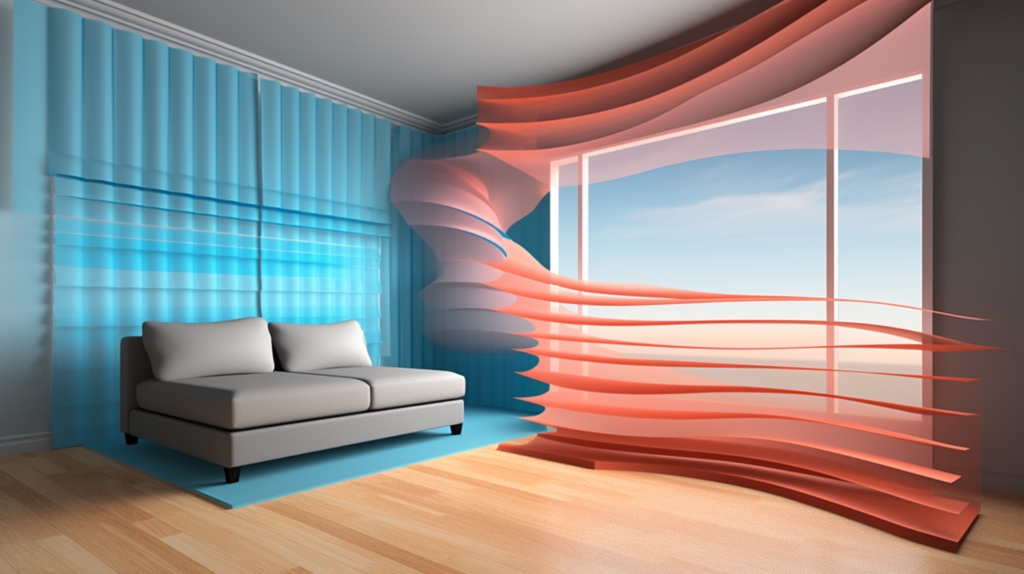
Soundproof curtains refer to curtains made from materials engineered to reduce the amount of noise and sound waves that can transmit into a room or enclosed space.
They are constructed from thick, multilayered dense fabrics designed to absorb and block incoming sound waves attempting to travel through windows, doors, vents or other openings that are covered by the noise-reducing curtain panels.
Sound travels in invisible waves through the air. When those sound waves reach and hit an object like a window, some of the kinetic energy from the sound gets transferred into vibrations as the sound tries to pass through.
This is why noise like traffic can be heard inside even when windows are closed – the sound energy passes through solid barriers.
Soundproof curtains work by using thick, heavy fabrics to absorb and dampen some of the sound wave energy so less gets transferred through to the other side as noise.
The dense materials also physically impede and reflect many of the sound waves back instead of letting them travel into the space, blocking the noise.
By absorbing and blocking noise transmission, soundproof curtains have the ability to significantly decrease the amount of overall noise pollution and disruptive sounds entering into a room through windows, doors or other openings.
This can help create a quieter, more peaceful interior environment free from annoying exterior noises or sounds traveling between rooms.
Soundproof curtains provide an accessible and relatively affordable way to start reducing unwanted noises in a space without major renovation work. They can make a tangible improvement to noise and acoustics with proper installation.
How Much Noise Do Soundproof Curtains Actually Block
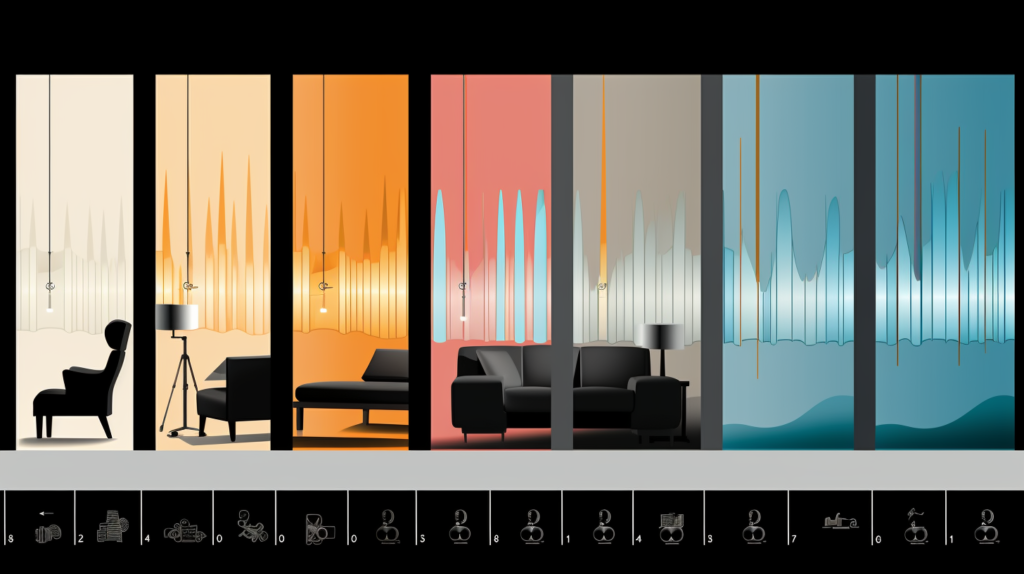
While soundproof curtains are very effective at reducing incoming noise, they do not block sound completely or make a space 100% soundproof. The exact amount of noise reduction they can provide depends on several factors.
These factors include the density, mass, and thickness of the curtain fabric materials, the total size of the curtains and how well they seal off the window or opening space, as well as the specific type and frequencies of the noises they are attempting to block out.
High quality soundproof curtains made from thick, multilayered heavyweight fabrics can reduce loud outside environmental noises like traffic coming through windows and openings by up to 27 decibels, which equates to blocking out about 90% of those sounds.
This means heavy soundproof curtains eliminate the majority of disruptive noises from nearby sources like busy urban streets, traffic, construction sites, or noisy neighborhoods.
They absorb and dampen most of these types of loud, high frequency airborne noises originating from outside the structure very effectively.
However, soundproof curtains on their own are less effective against very low frequency sounds like the deep rumble of truck engines or throbbing bass from a car stereo system.
They also do less to block noises originating from vibrations within the same building structure, like footsteps in an upstairs apartment or muffled voices in adjacent rooms.
While soundproof curtains alone will not completely soundproof a space to the point of eliminating all exterior noise pollution or interior sounds.
They still can make a significant reduction in the amount of overall noise coming in through the windows, doors or other openings they cover.
The right curtains can reduce noise ingress by up to 90% in some cases, providing major sound dampening benefits.
What Factors Determine How Well Soundproof Curtains Work?
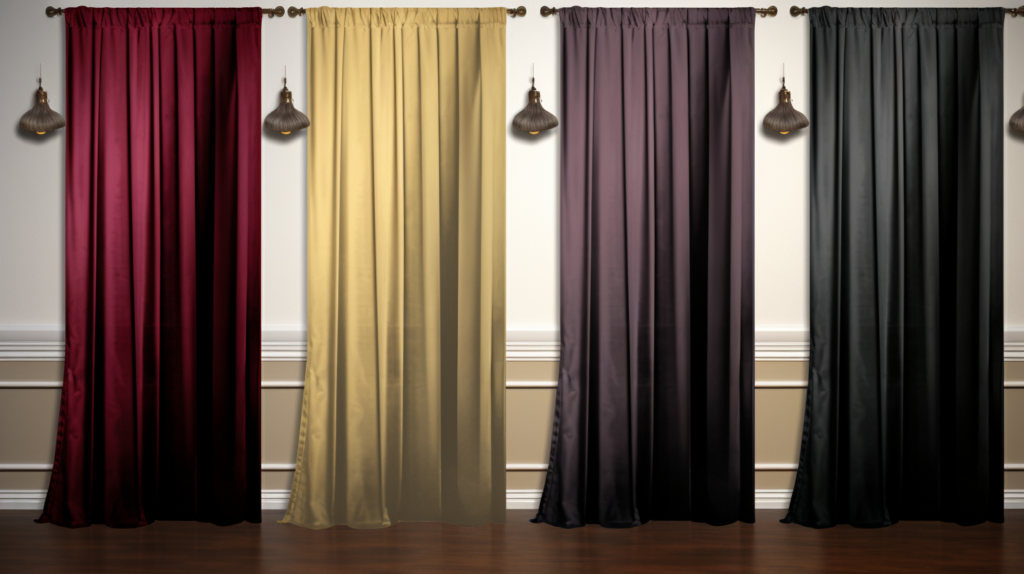
There are several important factors that impact how well soundproof curtains are able to absorb and block audible noise within a room.
The overall thickness and density of the curtain fabrics play a big role, as curtains made with more layers of heavy, dense materials increase their noise dampening abilities.
Heavy fabrics like velvet, brocade, thick quilted materials, and tightly woven synthetic fibers work best to absorb sound energy and physically block sound waves from passing through the curtain barrier.
Lightweight, thin materials like basic cotton sheers provide much less actual noise reduction despite being a physical barrier.
The total weight of the curtain panels and density rating are also key factors, with heavier curtains made from higher density materials being able to block more of the sound waves due to their increased mass.
One good rule of thumb for larger windows is to look for curtains with a minimum density rating of 400g/m2 (grams per square meter) or higher to achieve meaningful noise blocking results.
The more total surface area the soundproof curtains can cover when fully closed also impacts their absorptive abilities. Any small gaps around or between curtain panels allow higher frequency noises to continue filtering through.
Soundproof curtains should be sized appropriately to fully cover the entire span and area of the window, doorway or other opening space, with generous overlap where multiple panels meet to seal gaps.
Having curtains that are sufficiently dense and heavy enough to completely block out all external light when closed ensures no gaps remain for noise intrusion and provides the highest level of achievable sound absorption.
The specific type of noise trying to be reduced also impacts the expected results.
Soundproof curtains work exceptionally well to absorb and dampen high-frequency noises originating externally from sources like vehicle traffic, trains, construction sites, or other urban ambient sounds.
They are less inherently effective against very low frequency noises like thunder, heavy bass music, or appliance rumblings and vibrations that can penetrate denser materials.
Curtains also do less to dampen noises generated from within the building itself like footsteps, voices, or stereo systems in adjacent rooms where vibrations transmit through the structure.
Adding mass loaded insulation, quilted inner linings, or other sound-dampening materials as backing layers to the curtains can help improve their ability to block more of these challenging low frequency noises.
What Are The Limitations Of Soundproof Curtains?
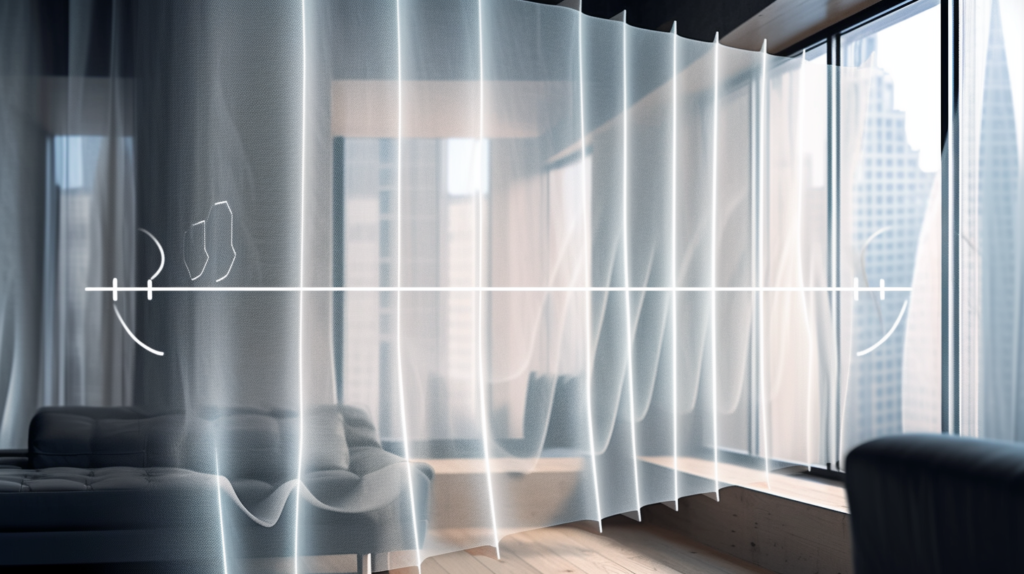
While soundproof curtains are very beneficial for reducing many types of noise, they do have some inherent limitations in terms of what types of sounds they address.
For one, even the heaviest and most multilayered soundproof curtains do not block 100% of noise across all frequencies. Very low rumbles and vibrations can still penetrate dense materials.
Small gaps around the edges of curtains or thin window frames can also allow some noise like voices to continue filtering through.
In addition, soundproof curtains on their own are not overly effective at reducing noise and vibrations transmitted through the actual building structure itself, such as footsteps from upstairs apartments or loud music from next door vibrating through shared walls.
These types of noises require additional insulation and soundproofing methods.
To fully soundproof a room for maximum noise control, soundproof curtains need to be used along with other noise blocking materials like acoustical panels and insulation, as well as proper construction techniques and environmental noise barriers.
Reaching the maximum possible level of sound absorption and noise reduction may also require installing two or even three layers of very dense, heavyweight curtain fabrics, which can become expensive as well as bulky and cumbersome.
These extreme light-blocking and noise-blocking curtains also tend to be quite bulky and heavy, which may not be decor appropriate or fit the aesthetic of every room.
And because they mainly address just windows and openings, louder noises can still intrude through uninsulated walls, ceilings, doors and vents.
How To Maximize Noise Reduction Using Soundproof Curtains
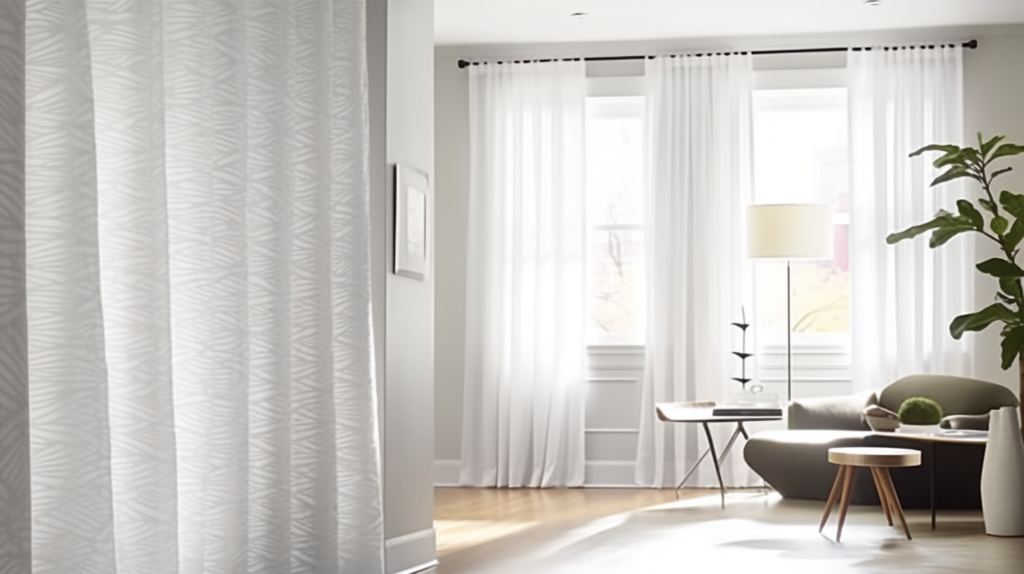
There are some best practices that can help maximize the amount of noise reduction achieved when using soundproof curtains in a space.
When selecting curtain fabric, prioritizing density, thickness, multilayered construction and overall weight per square area is the most critical factor.
Lightweight, thin single layer materials should be avoided in favor of the heaviest, densest soundproof fabrics possible, ideally with a minimum density rating of 400g/m2 or higher.
The more mass a curtain has, the more sound energy it will absorb. Choosing fabrics with built-in quilted layers, heavy draperies or velvet, or adding extra inner layers of insulating batting adds surface area and mass to dampen noise.
Using thick blackout lining on the curtains eliminates gaps that allow light and noise to penetrate.
Installing the curtains is also important – they should completely cover the full span and area of the window or opening space, installed floor-to-ceiling with generous overlap in the middle without any gaps.
Hanging them as close to the ceiling as possible provides more surface coverage.
Sealing edges fully with industrial strength Velcro, overlapping panels, or installing a second set of interior curtains lined with insulation minimizes noise intrusion past the curtains.
Combining curtains with acoustic foam panels, bass traps, wall insulation and other materials addresses noise penetration via other weak points in room construction. A multilayered approach maximizes noise control.
Alternatives To Soundproof Curtains For Windows
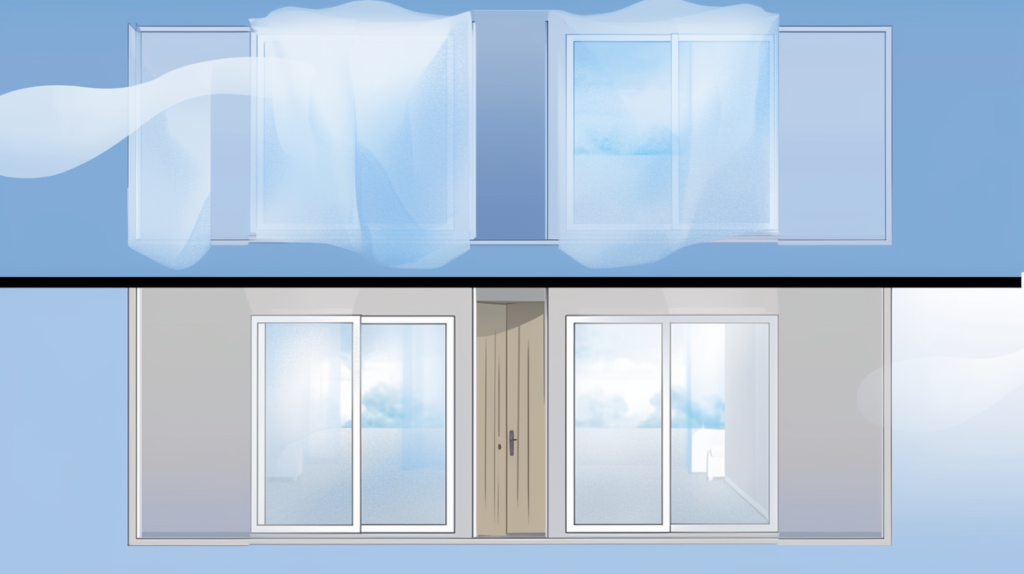
While very effective, heavy soundproof curtains are not the only option to reduce noise intrusion through windows in a space. Other window treatments and architectural upgrades warrant consideration as alternatives.
Double or triple-pane windows use multiple layers of glass with sealed air gaps in between which can lessen noise transmission through the window assembly. Laminated glass with an internal plastic layer also helps dampen noise and vibrations.
Acoustic window inserts made of sound-absorbing transparent materials can also be customized to fit into existing window frames as a retrofit noise solution. Interior storm windows added as a secondary barrier over existing windows likewise impede noise.
Solid core or thick paneled doors, along with improved door seals and thresholds, can also reduce noise intrusion from adjacent rooms.
However these other noise control methods tend to be much more expensive and complicated to properly install compared to simply mounting appropriate soundproof curtains over windows and openings.
Conclusion
In summary, soundproof curtains can be highly effective for reducing many types of disruptive noise pollution, especially higher frequency sounds originating outdoors like traffic that try to enter interior spaces through windows and openings.
The density and weight of the fabrics play a big role, with heavier multilayered curtains providing up to 90% noise reduction.
However, soundproof curtains do have limitations in terms of certain very low frequency noises and vibrations that curtains alone cannot adequately address.
To fully soundproof a space for maximum noise control, they will need to be used along with additional insulation, construction materials, and proper installation methods.
When selected for the specific environment and noise problem, then properly installed over all windows, doors, and openings, quality soundproof curtains can make a substantial improvement in decreasing unwanted noise that enters a room or building.
While not a magic bullet to eliminate all noises entirely, soundproof curtains provide an accessible first step to absorbing excess noise for a quieter interior environment.
